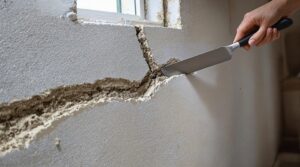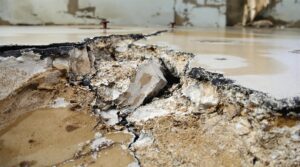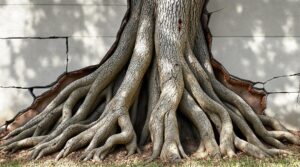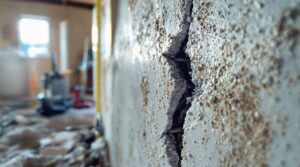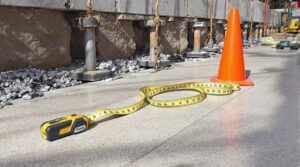Coconut tree roots can potentially damage foundations due to their extensive and aggressive growth patterns. Factors such as soil composition, tree size, and location influence root growth and the likelihood of damage. The roots can extend up to three times the tree's crown diameter, posing a significant risk to nearby foundations. Understanding the root structure and growth patterns of coconut trees is essential in evaluating the risks and taking preventative measures to protect foundations, a topic that warrants further exploration.
Key Takeaways
- Coconut tree roots can damage foundations, especially if the tree is large and close to the foundation.
- Soil composition plays a significant role in determining the aggressiveness of root growth and potential damage.
- Root growth patterns tend to be outward and upward, increasing the risk of damage to nearby foundations.
- Installing root barriers or planting trees in containers can help prevent root-related damage to foundations.
- Regular tree pruning and soil management can control root system size and direction, reducing the likelihood of damage.
Understanding Coconut Tree Roots
The root system of a coconut tree is a complex network of fibers and vessels that serve as the tree's primary mechanism for water and nutrient uptake. Comprising a combination of taproots, anchor roots, and extensive systems of fine, branching roots, coconut tree root structure is dynamic and highly adaptable.
The taproot, typically growing up to 6 feet deep, serves as the primary anchor and conduit for nutrient absorption. Anchor roots provide additional support, while the extensive network of fine roots facilitates absorption of moisture and nutrients.
Coconut tree growth patterns showcase rapid root expansion in the first few years of development, gradually slowing as the tree reaches maturity. Understanding coconut tree root structure and growth patterns is essential for evaluating the potential risks associated with planting these trees in close proximity to foundations and other infrastructure.
Effective management and planning help mitigate the risk of future damage.
Factors That Contribute to Foundation Damage
As coconut trees mature and their root systems expand, several factors contribute to the potential for foundation damage. The aggressive growth of coconut tree roots can create pressure against nearby structures, leading to cracks and structural instability. Additionally, homeowners with mango tree root concerns often find that these roots exacerbate the problem, intertwining with those of the coconut tree and further complicating the risks of damage to foundations. Proper assessment and management of both tree root systems are essential to mitigate potential issues.
Soil composition plays a significant role, as coconut tree roots can grow more aggressively in certain soil types, increasing the risk of foundation disruption.
Root growth patterns also contribute to the potential for damage, as coconut tree roots tend to grow outward and upward in search of water and nutrients.
Factors that contribute to foundation damage from coconut tree roots include:
- Soil type and composition: Certain soils such as expansive clays or loose sands can increase the risk of foundation damage.
- Root growth patterns: The direction and rate of root growth can impact the likelihood of foundation disruption.
- Tree size and location: Larger trees planted closer to foundations can increase the risk of damage due to their more extensive root systems.
Assessing the Risks of Planting Coconut Trees Near Foundations
When considering the placement of coconut trees in relation to foundations, careful evaluation of the potential risks is essential to mitigate the likelihood of damage.
Coconut tree roots can extend notably beyond the tree's canopy, with some roots stretching up to three times the diameter of the tree's crown. Understanding coconut tree root growth patterns is vital to evaluating the risks associated with planting these trees near foundations.
Root growth patterns are influenced by factors such as soil type, climate, and available moisture. In general, coconut tree roots tend to grow more extensively in shallow, well-draining soils.
In areas with poor soil conditions, roots may grow deeper in search of water and nutrients. By considering these factors, property owners can make informed decisions regarding coconut tree placement, minimizing the risk of root-related damage to foundations.
A thorough evaluation of the site conditions is critical to determining the feasibility of planting coconut trees near foundations.
Strategies for Preventing Root-Related Damage
Because coconut tree root growth can be unpredictable and extend a significant distance beyond the tree's canopy, implementing strategies to prevent root-related damage is essential for protecting foundations.
To mitigate potential damage, several approaches can be employed.
- Installing root barriers, such as HDPE or PVC sheets, around the perimeter of the foundation can prevent roots from growing underneath the structure.
- Planting coconut trees in containers or root-control bags can limit the spread of the root system and reduce the risk of damage.
- Regular tree pruning can help control the size of the tree and reduce the extent of its root system, minimizing the likelihood of root-related damage.
These strategies can be used alone or in combination to protect foundations from coconut tree root damage.
It is essential to take into account the specific site conditions and tree characteristics when selecting a prevention method.
Managing and Maintaining Coconut Trees to Protect Foundations
Effective prevention methods can minimize the risk of coconut tree root damage to foundations, but ongoing management and maintenance are also necessary to secure long-term protection.
Root pruning is a vital aspect of managing coconut trees near foundations. Regular pruning helps control the root system's size and direction, reducing the likelihood of damage. Pruning should be performed by a certified arborist to avoid harming the tree.
Soil management is another important component of maintaining coconut trees near foundations. Proper soil moisture levels, nutrient balance, and pH can promote healthy root growth and minimize the risk of damage. Regular soil testing and amendments can help maintain ideal soil conditions.
By combining prevention methods with regular management and maintenance, property owners can effectively protect their foundations from coconut tree root damage and guarantee the long-term health and stability of both the tree and the structure.
Regular inspections are also recommended.
Frequently Asked Questions
Can Coconut Trees Be Safely Planted Near Swimming Pools?
Coconut trees can be safely planted near swimming pools if properly planned and maintained. A safe distance of at least 15-20 feet is recommended to prevent root intrusion and leaf litter from entering the pool.
Are Coconut Tree Roots Invasive to Septic Systems?
How ironic that a tree so majestic can be so problematic – coconut tree roots can extend far, potentially causing significant septic system impacts by disrupting pipes, clogging drains, and contaminating water sources if planted too close.
How Long Does It Take to See Root Damage From Coconut Trees?
Root damage from coconut trees can become apparent within 5-10 years, depending on factors like soil quality, moisture, and root growth timeline. Damage indicators include cracks in walls, floors, and pipes, as well as uneven ground surfaces.
Do Coconut Trees Ever Stop Producing New Roots?
Invoking the unyielding expansion of the Banyan tree, coconut trees exhibit unrelenting coconut growth fueled by an extensive network of roots, which continually sprout new appendages throughout their root lifespan, never truly ceasing production.
Can Root Damage Be Reversed Without Removing the Coconut Tree?
Root damage can be reversed through selective root pruning to relieve pressure on affected structures. Foundation repair may also be necessary to restore integrity and prevent further damage from coconut tree root growth.
